1. Introduction
Tulips are known for their vibrant colors and graceful shapes, making them a hallmark of spring gardens. Known for their brief but stunning bloom period, they bring life to landscapes and gardens worldwide. However, many gardeners ponder whether tulips can bloom more than once or come back every year in the same growing season. This article covers tulip blooming cycles, factors affecting their reblooming potential, and the best care practices to maintain healthy plants.
Overview of Tulips as a Beloved Spring Flower
Tulips are among the most lovely springtime flowers, admired for their vibrant colors and elegant shapes. Originating from Central Asia and the Middle East, tulips have become a global symbol of beauty and renewal. Their wide range of hues, from deep reds and purples to bright yellows and whites, makes them a favorite for gardens, bouquets, and decorative landscapes.
Why Understanding Tulip Blooming Cycles is Important for Gardeners
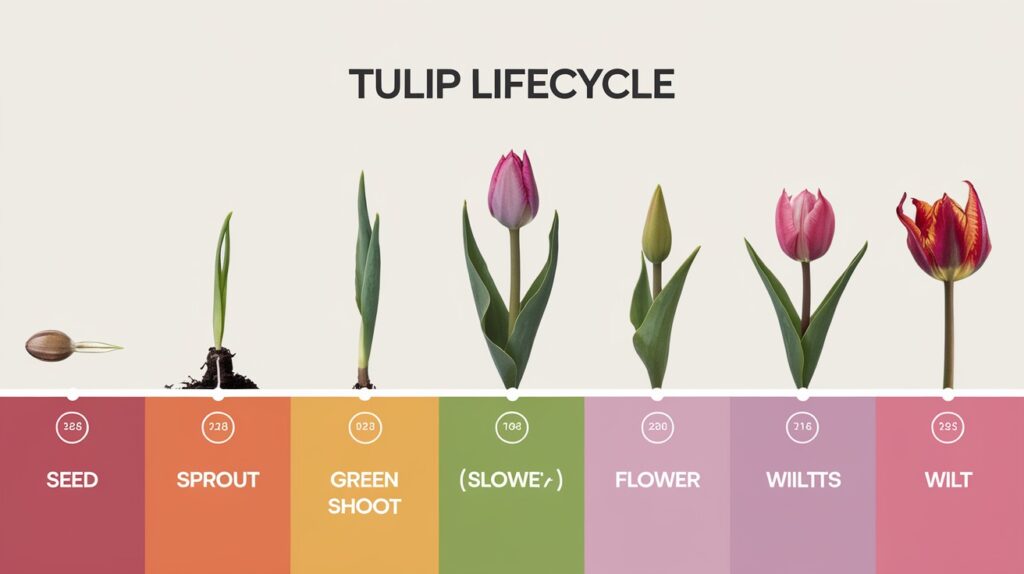
For gardeners, understanding the blooming cycle of tulips is essential to maintaining a thriving garden. Tulips require specific care at each stage of their lifecycle to produce the stunning flowers they’re known for. Mismanagement during or after blooming can affect the health of the bulbs and reduce their chances of returning next season. Knowing the limits of their blooming capacity helps gardeners set realistic expectations and plan their flower beds effectively.
Introduction to the Main Question: Can Tulips Bloom Twice in One Season?
A common question among tulip enthusiasts is whether these plants can bloom twice within a single growing season. While tulips are celebrated for their vibrant spring display, their natural lifecycle and biological limitations typically restrict them to one bloom per season. In this article, we’ll explore the tulip’s blooming cycle, factors influencing it, and whether there are any conditions under which tulips might bloom a second time.
2. Natural Blooming Cycle of Tulips
Explanation of the Typical Blooming Period (Spring)
Tulips are known for their springtime blooms, which occur once temperatures begin to rise after winter. This period is when tulips emerge from their dormancy, using the energy stored in their bulbs to produce stems, leaves, and flowers. For most tulip varieties, this process begins in early to mid-spring, depending on the climate and planting time.
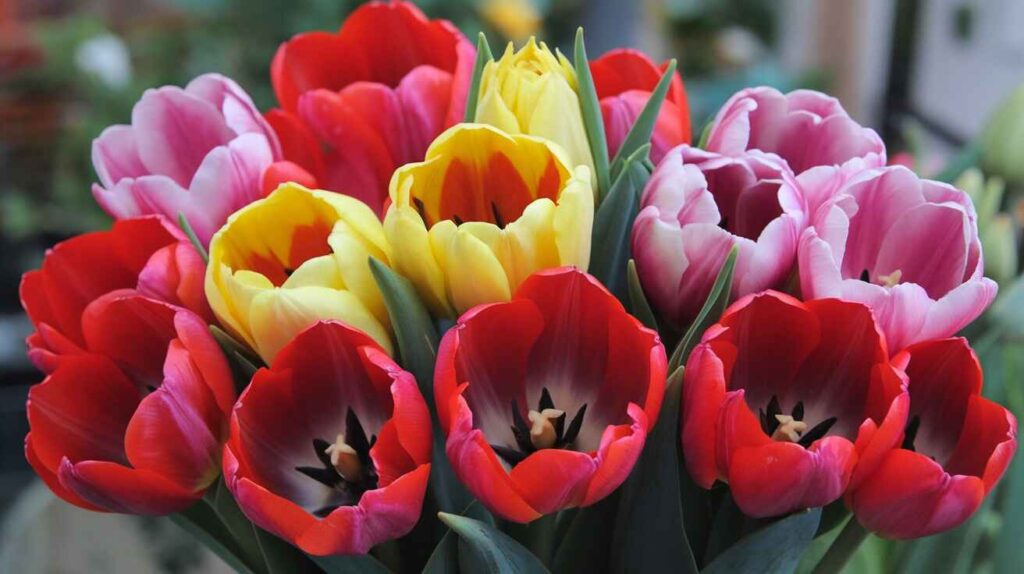
Duration of Tulip Blooms in a Season
The blooming phase of tulips is relatively short but intensely captivating. On average, tulips bloom for 1 to 2 weeks. Weather conditions, such as temperature and rainfall, can extend or shorten this period. Cooler temperatures generally prolong the blooming phase, while sudden heat can cause flowers to wilt quickly.
Factors That Limit Tulips to a Single Bloom Per Season
Tulips are biologically programmed to bloom only once per growing season due to their natural lifecycle. Several factors contribute to this limitation:
- Energy Storage in Bulbs: After blooming, tulips focus on replenishing the nutrients and energy in their bulbs to prepare for the next year. This energy-intensive process prevents them from producing another round of flowers.
- Dormancy Requirements: Tulips need a cold dormancy period (vernalization) to trigger the next bloom cycle. Without this phase, the bulbs cannot generate flowers again within the same season.
- Flowering Mechanism: The growth and flowering of tulips are guided by internal genetic cues. Once a tulip completes its bloom, its lifecycle naturally progresses to the energy storage and dormancy stages, making reblooming within the same season highly unlikely.
3. Possibility of Tulips Blooming Twice in One Season
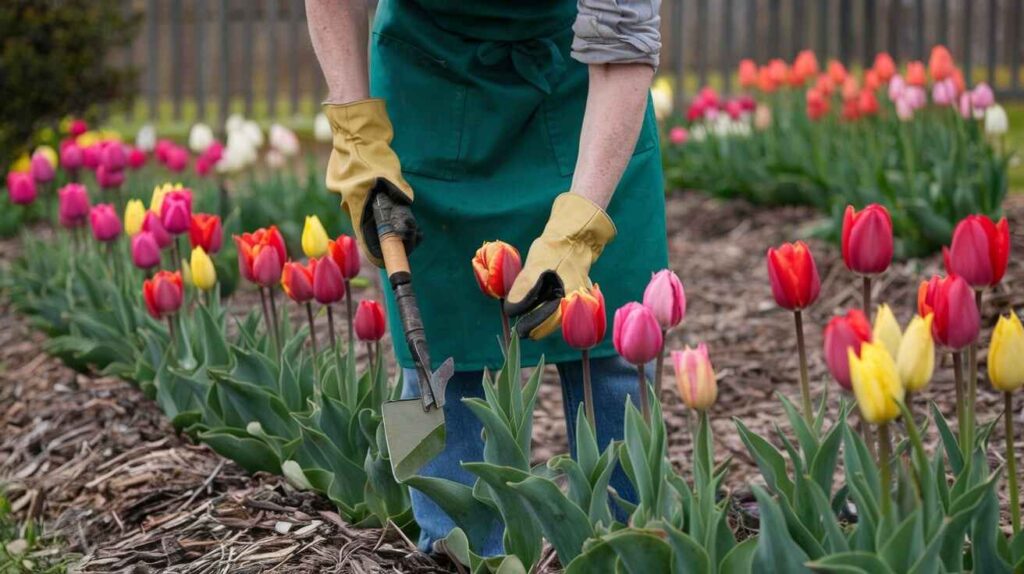
Challenges to Achieving a Second Bloom
Tulips rarely bloom twice in one season due to their natural growth cycle. After their initial bloom in spring, tulips transition to a phase focused on storing energy in their bulbs for the next year. Producing another bloom requires significant energy, which tulips simply cannot generate again without undergoing a dormancy period. Factors like temperature fluctuations, nutrient deficiencies, and the absence of proper dormancy conditions further limit the likelihood of a second bloom.
Conditions Under Which Tulips Might Rebloom
While uncommon, certain specific conditions may encourage tulips to rebloom:
- Climate Zones: In areas with extended spring seasons or mild summers, some tulip varieties may maintain their foliage longer, potentially encouraging a second bloom.
- Species-Specific Behavior: Certain wild tulip species, such as Tulipa tarda, have a more robust growth pattern that occasionally allows for extended blooming periods.
- Optimal Care: Consistently ideal soil conditions, nutrients, and watering practices can maximize bulb health, increasing the chance of longer blooming periods.
Examples of Tulip Varieties with Potential for Extended Blooming
Some tulip varieties are bred for extended blooming or have natural tendencies for prolonged flowering. Examples include:
- Tulip tarda: Known for its extended blooming potential under ideal conditions.
- Fosteriana Tulips: These early bloomers occasionally exhibit longer flowering windows.
- Kaufmanniana Tulips: Their compact growth habit and resilience make them suitable for gardens with cooler climates, potentially extending bloom time.
4. Factors Influencing Tulip Blooming
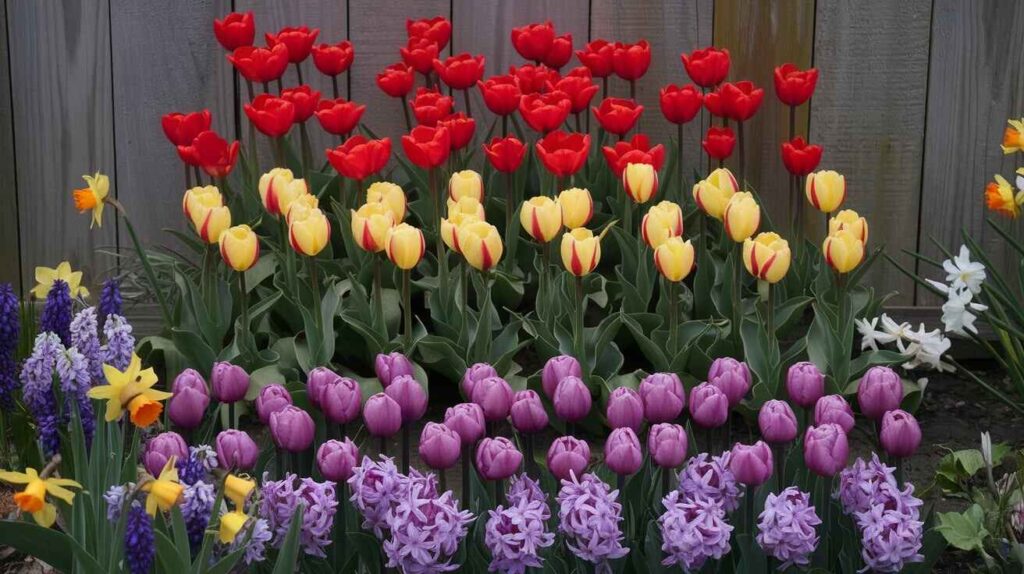
Role of Climate and Temperature
Climate plays a crucial role in the blooming patterns of tulips. Tulips thrive in climates with cold winters, which trigger dormancy, followed by a gradual warming in spring that encourages flowering. Unseasonal heat waves can shorten bloom time, while cooler springs can prolong it.
Soil Quality and Nutrients
Healthy, well-draining soil enriched with nutrients supports strong tulip growth. Tulips require a balanced mix of phosphorus for root development and potassium for bloom production. Poor soil quality or nutrient deficiencies can lead to weak blooms or hinder flowering altogether.
Proper Watering and Maintenance
Tulips need consistent moisture, particularly during their active growth phase. However, overwatering can lead to bulb rot, affecting both the current and future bloom cycles. Watering deeply but infrequently ensures healthy roots and vibrant flowers.
Impact of Light Exposure on Tulip Growth and Bloom Cycles
Tulips prefer full sun to partial shade for optimal growth. Adequate light exposure not only enhances flower production but also helps leaves generate energy for bulb storage. Insufficient sunlight can lead to smaller, less vibrant blooms.
5. Caring for Tulips After the First Bloom
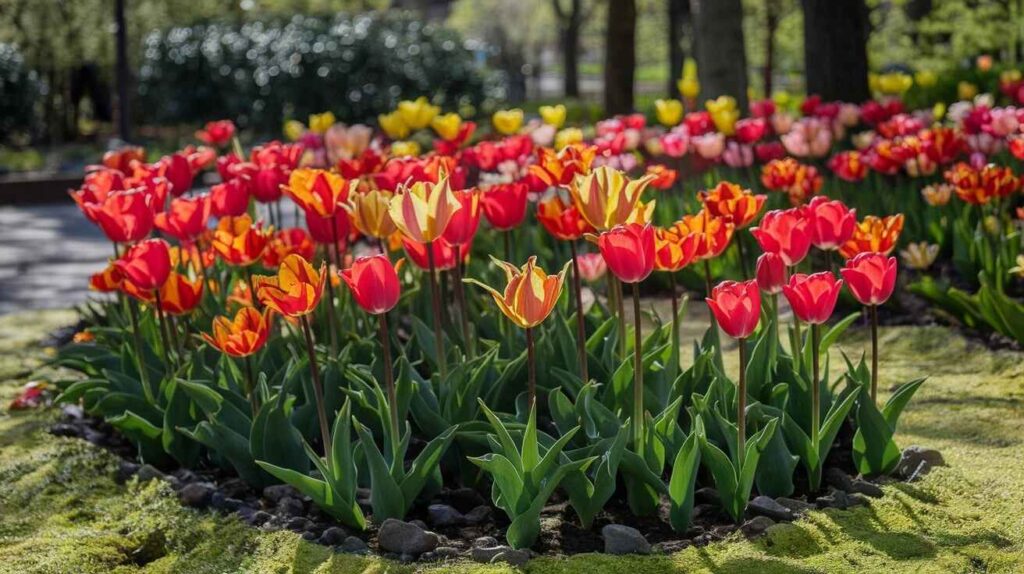
Deadheading and Its Impact on Potential Regrowth
Deadheading, or removing spent flowers, prevents the plant from wasting energy on seed production. This allows the bulb to focus on energy storage, which is crucial for healthy blooms the following season.
Techniques for Cutting Tulips to Promote Bulb Health
When cutting tulips for arrangements, leave at least two or three leaves intact on the stem. These leaves are essential for photosynthesis, helping the bulb store nutrients for future growth.
Importance of Fertilizing and Mulching After Blooming
Applying a balanced fertilizer after blooms fade can replenish nutrients in the soil, boosting bulb health. Mulching around the base of the plant helps retain moisture and regulate soil temperature, creating optimal conditions for bulb recovery.
6. Encouraging Tulips to Rebloom Next Year
Ensuring Tulip Bulbs Regenerate Properly
Proper care during and after the blooming phase is essential for bulb regeneration. Allowing foliage to die back naturally helps the bulb absorb nutrients for the next growth cycle.
Tips for Storing and Replanting Tulip Bulbs
In warmer climates, tulip bulbs can be dug up and stored in a cool, dry place over summer to mimic dormancy conditions. Replanting in the fall ensures they are ready to bloom the following spring.
How to Care for Tulips in Pots Versus the Ground
Potted tulips often require more frequent watering and fertilizing than those planted in the ground. Ensure containers have adequate drainage to prevent bulb rot. After blooming, transfer potted bulbs to the ground or store them for the next season.
7. Common Misconceptions About Tulip Blooming
Myths About Tulips Blooming Multiple Times a Year
One common myth is that tulips can rebloom within a single season with enough water and fertilizer. However, this is rarely true, as tulips rely on a dormancy period to prepare for the next bloom cycle.
Differences Between Perennial and Annual Tulip Varieties
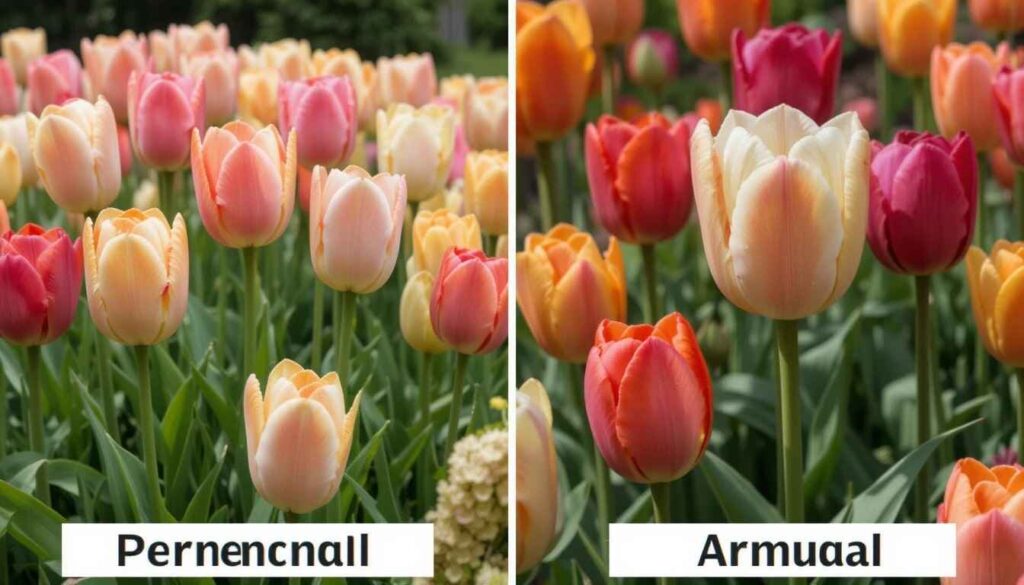
Perennial tulips, such as Darwin hybrids, can return for several seasons with proper care. Annual varieties, however, are often bred for a single spectacular bloom and may not return without replanting.
Understanding How Different Tulip Species Behave
Wild tulip species tend to naturalize and rebloom more reliably than hybrid varieties. They often have shorter but more consistent flowering cycles, making them ideal for naturalized garden settings.
8. Enhancing Garden Aesthetics with Tulips
Tips for Choosing Tulip Varieties for Continuous Garden Interest
Planting a mix of early, mid, and late-season tulip varieties ensures continuous blooms throughout spring. Varieties like Triumph tulips and Single Late tulips can extend the blooming period in your garden.
Pairing Tulips with Other Plants for Multi-Seasonal Appeal
Combine tulips with perennials like daffodils, hyacinths, or alliums for a dynamic garden display. These plants provide complementary colors and textures while extending seasonal interest.
Using Companion Plants to Maintain Visual Appeal After Tulips Fade
After tulips finish blooming, companion plants like hostas, ferns, or daylilies can fill the void, maintaining visual appeal and covering fading tulip foliage.
9. Conclusion
Recap of Tulip Blooming Cycles and the Possibility of Reblooming
Tulips are captivating spring flowers with a natural blooming cycle that typically limits them to one bloom per season. While achieving a second bloom is rare, understanding their growth patterns helps gardeners make informed decisions about care and maintenance.
Encouragement for Gardeners to Focus on Care and Long-Term Blooms
By prioritizing proper care, gardeners can ensure their tulips return year after year, enhancing the beauty of their gardens with vibrant spring displays.
Final Thoughts on Maximizing Tulip Beauty in the Garden
With the right variety selection, thoughtful garden planning, and diligent care, tulips can remain a highlight of your landscape for many seasons to come.

